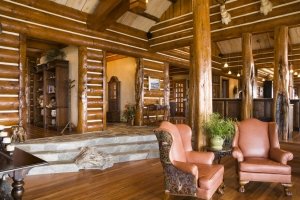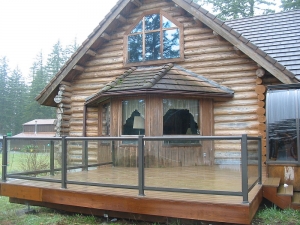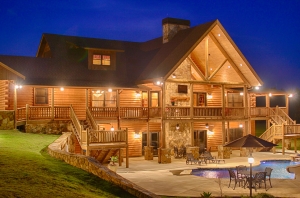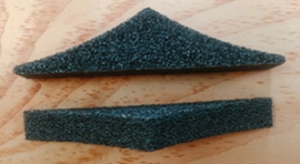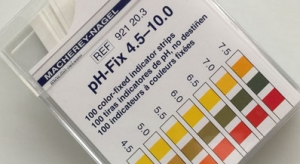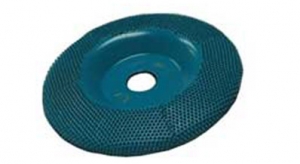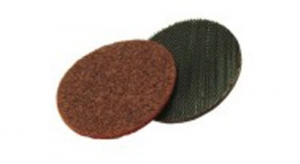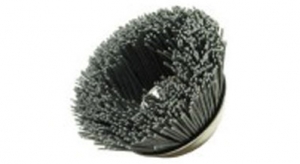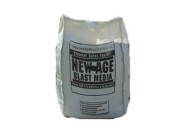 Perma-Chink Systems, Inc
Log & Timber Home Care Experts
Perma-Chink Systems, Inc
Log & Timber Home Care Experts
Michael
Find a Dealer:
Enter your address or zip code to find a dealer near you.
For United States & Canada
International Distribution:
CANADA
Eastern Canada
CANADIAN LOG HOME SUPPLY - www.canadianloghomesupply.com
Phone: 1-800-746-7773
Western Canada
WHITE CAP (formerly BROCK WHITE) – whitecapsupply.com
Phone: 1-877-846-7502
CANADA'S LOG and WOOD HOME STORE - www.loghomestore.ca
Phone: 1-877-659-2682
EUROPE
Finland
LOG HOUSE CENTER OU www.permachink.ee/fi
Estonia
LOG HOUSE CENTER OU www.permachink.ee/ee
Phone: + 372-520-5630
UK-England
BRITISH LOG CABINS http://www.britishlogcabins.com
Phone: + 01694 781 399
PERMACHINK UK https://permachink.co.uk/
Phone: +44(0)7875 655 255
ASIA
Korea
ELTHUS T&L www.elthus.co.kr
-
 Lifeline Interior Clear
Lifeline Interior Clear
Lifeline Interior Clear
Lifeline Interior Clear
-
 Lifeline Interior Pickled...
Lifeline Interior Pickled...
Lifeline Interior Pickled...
Lifeline Interior Pickled...
-
 Lifeline Accents Sand...
Lifeline Accents Sand...
Lifeline Accents Sand...
Lifeline Accents Sand...
-
 Lifeline Interior Dark...
Lifeline Interior Dark...
Lifeline Interior Dark...
Lifeline Interior Dark...
-
 Lifeline Dark Natural
Lifeline Dark Natural
Lifeline Dark Natural
Lifeline Dark Natural
-
 Lifeline Interior Pickled...
Lifeline Interior Pickled...
Lifeline Interior Pickled...
Lifeline Interior Pickled...
-
 Lifeline Interior Walnut
Lifeline Interior Walnut
Lifeline Interior Walnut
Lifeline Interior Walnut
-
 Lifeline Interior Gentry...
Lifeline Interior Gentry...
Lifeline Interior Gentry...
Lifeline Interior Gentry...
-
 Lifeline Ultra-2 Gentry...
Lifeline Ultra-2 Gentry...
Lifeline Ultra-2 Gentry...
Lifeline Ultra-2 Gentry...
-
 Lifeline Dark Honey...
Lifeline Dark Honey...
Lifeline Dark Honey...
Lifeline Dark Honey...
-
 Lifeline Interior Hazelnut...
Lifeline Interior Hazelnut...
Lifeline Interior Hazelnut...
Lifeline Interior Hazelnut...
-
 Lifeline Interior Light...
Lifeline Interior Light...
Lifeline Interior Light...
Lifeline Interior Light...
-
 Lifeline Interior Hazelnut...
Lifeline Interior Hazelnut...
Lifeline Interior Hazelnut...
Lifeline Interior Hazelnut...
-
 Lifeline Interior Dark...
Lifeline Interior Dark...
Lifeline Interior Dark...
Lifeline Interior Dark...
-
 Lifeline Interior Dark...
Lifeline Interior Dark...
Lifeline Interior Dark...
Lifeline Interior Dark...
-
 Lifeline Interior Light...
Lifeline Interior Light...
Lifeline Interior Light...
Lifeline Interior Light...
-
 Lifeline Interior Dark...
Lifeline Interior Dark...
Lifeline Interior Dark...
Lifeline Interior Dark...
-
 Lifeline Interior Dark...
Lifeline Interior Dark...
Lifeline Interior Dark...
Lifeline Interior Dark...
-
 Lifeline Interior Dark...
Lifeline Interior Dark...
Lifeline Interior Dark...
Lifeline Interior Dark...
-
 Lifeline Interior Dark...
Lifeline Interior Dark...
Lifeline Interior Dark...
Lifeline Interior Dark...
-
 Lifeline Interior Driftwood...
Lifeline Interior Driftwood...
Lifeline Interior Driftwood...
Lifeline Interior Driftwood...
-
 Lifeline Interior Butternut...
Lifeline Interior Butternut...
Lifeline Interior Butternut...
Lifeline Interior Butternut...
-
 Lifeline Interior Dark...
Lifeline Interior Dark...
Lifeline Interior Dark...
Lifeline Interior Dark...
-
 Lifeline Interior Clear...
Lifeline Interior Clear...
Lifeline Interior Clear...
Lifeline Interior Clear...
-
 Lifeline Interior Hazelnut...
Lifeline Interior Hazelnut...
Lifeline Interior Hazelnut...
Lifeline Interior Hazelnut...
-
 Lifeline Interior Hazelnut...
Lifeline Interior Hazelnut...
Lifeline Interior Hazelnut...
Lifeline Interior Hazelnut...
-
 Lifeline Interior Light...
Lifeline Interior Light...
Lifeline Interior Light...
Lifeline Interior Light...
-
 Lifeline Interior Light...
Lifeline Interior Light...
Lifeline Interior Light...
Lifeline Interior Light...
-
 Lifeline Interior Dark...
Lifeline Interior Dark...
Lifeline Interior Dark...
Lifeline Interior Dark...
-
 Lifeline Interior Light...
Lifeline Interior Light...
Lifeline Interior Light...
Lifeline Interior Light...
-
 Lifeline Interior Light...
Lifeline Interior Light...
Lifeline Interior Light...
Lifeline Interior Light...
-
 Lifeline Interior Dark...
Lifeline Interior Dark...
Lifeline Interior Dark...
Lifeline Interior Dark...
-
 Lifeline Interior Light...
Lifeline Interior Light...
Lifeline Interior Light...
Lifeline Interior Light...
-
 Lifeline Interior Light...
Lifeline Interior Light...
Lifeline Interior Light...
Lifeline Interior Light...
-
 Lifeline Interior Dark...
Lifeline Interior Dark...
Lifeline Interior Dark...
Lifeline Interior Dark...
-
 Lifeline Interior Hazelnut...
Lifeline Interior Hazelnut...
Lifeline Interior Hazelnut...
Lifeline Interior Hazelnut...
-
 Lifeline Interior Dark...
Lifeline Interior Dark...
Lifeline Interior Dark...
Lifeline Interior Dark...
-
 Lifeline Interior Dark...
Lifeline Interior Dark...
Lifeline Interior Dark...
Lifeline Interior Dark...
-
 Lifeline Interior Dark...
Lifeline Interior Dark...
Lifeline Interior Dark...
Lifeline Interior Dark...
-
 Lifeline Interior Light...
Lifeline Interior Light...
Lifeline Interior Light...
Lifeline Interior Light...
-
 Lifeline Interior Butternut...
Lifeline Interior Butternut...
Lifeline Interior Butternut...
Lifeline Interior Butternut...
-
 Lifeline Interior Light...
Lifeline Interior Light...
Lifeline Interior Light...
Lifeline Interior Light...
-
 Lifeline Interior Hazelnut...
Lifeline Interior Hazelnut...
Lifeline Interior Hazelnut...
Lifeline Interior Hazelnut...
-
 Lifeline Interior Butternut...
Lifeline Interior Butternut...
Lifeline Interior Butternut...
Lifeline Interior Butternut...
-
 Lifeline Interior Dark...
Lifeline Interior Dark...
Lifeline Interior Dark...
Lifeline Interior Dark...
-
 Lifeline Interior Butternut...
Lifeline Interior Butternut...
Lifeline Interior Butternut...
Lifeline Interior Butternut...
-
 Lifeline Interior Hazelnut...
Lifeline Interior Hazelnut...
Lifeline Interior Hazelnut...
Lifeline Interior Hazelnut...
-
 Lifeline Interior Dark...
Lifeline Interior Dark...
Lifeline Interior Dark...
Lifeline Interior Dark...
-
 Lifeline Interior Dark...
Lifeline Interior Dark...
Lifeline Interior Dark...
Lifeline Interior Dark...
-
 Lifeline Interior Light...
Lifeline Interior Light...
Lifeline Interior Light...
Lifeline Interior Light...
-
 Lifeline Interior Dark...
Lifeline Interior Dark...
Lifeline Interior Dark...
Lifeline Interior Dark...
-
 Lifeline Interior Hazelnut...
Lifeline Interior Hazelnut...
Lifeline Interior Hazelnut...
Lifeline Interior Hazelnut...
-
 Lifeline Interior Dark...
Lifeline Interior Dark...
Lifeline Interior Dark...
Lifeline Interior Dark...
-
 Lifeline Interior Dark...
Lifeline Interior Dark...
Lifeline Interior Dark...
Lifeline Interior Dark...
-
 Lifeline Interior Light...
Lifeline Interior Light...
Lifeline Interior Light...
Lifeline Interior Light...
-
 Lifeline Interior Light...
Lifeline Interior Light...
Lifeline Interior Light...
Lifeline Interior Light...
-
 Lifeline Interior Dark...
Lifeline Interior Dark...
Lifeline Interior Dark...
Lifeline Interior Dark...
-
 Lifeline Interior Light...
Lifeline Interior Light...
Lifeline Interior Light...
Lifeline Interior Light...
-
 Lifeline Interior Light...
Lifeline Interior Light...
Lifeline Interior Light...
Lifeline Interior Light...
-
 Lifeline Interior Butternut...
Lifeline Interior Butternut...
Lifeline Interior Butternut...
Lifeline Interior Butternut...
https://www.permachink.com/blog/michael/page-33?start=210#sigProIdc6ab69926e
-
 Before
Before
Before
Before
-
 After
After
After
After
-
 Before
Before
Before
Before
-
 After
After
After
After
-
 Before
Before
Before
Before
-
 After
After
After
After
-
 Before
Before
Before
Before
-
 After
After
After
After
-
 Before Prelude, Lifeline...
Before Prelude, Lifeline...
Before Prelude, Lifeline...
Before Prelude, Lifeline...
-
 After Prelude, Lifeline...
After Prelude, Lifeline...
After Prelude, Lifeline...
After Prelude, Lifeline...
-
 Before Lifeline Ultra...
Before Lifeline Ultra...
Before Lifeline Ultra...
Before Lifeline Ultra...
-
 After Lifeline Ultra...
After Lifeline Ultra...
After Lifeline Ultra...
After Lifeline Ultra...
-
 Before Lifeline Ultra-2...
Before Lifeline Ultra-2...
Before Lifeline Ultra-2...
Before Lifeline Ultra-2...
-
 After Lifeline Ultra-2...
After Lifeline Ultra-2...
After Lifeline Ultra-2...
After Lifeline Ultra-2...
-
 Before Cedar Wash
Before Cedar Wash
Before Cedar Wash
Before Cedar Wash
-
 After Cedar Wash
After Cedar Wash
After Cedar Wash
After Cedar Wash
-
 Before Lifeline Ultra-7...
Before Lifeline Ultra-7...
Before Lifeline Ultra-7...
Before Lifeline Ultra-7...
-
 After Lifeline Ultra...
After Lifeline Ultra...
After Lifeline Ultra...
After Lifeline Ultra...
-
 Before
Before
Before
Before
-
 After
After
After
After
-
 Before
Before
Before
Before
-
 After
After
After
After
-
 Before
Before
Before
Before
-
 Before
Before
Before
Before
-
 Before
Before
Before
Before
-
 After
After
After
After
-
 Before
Before
Before
Before
-
 After
After
After
After
-
 Before sandblasting
Before sandblasting
Before sandblasting
Before sandblasting
-
 During sandblasting
During sandblasting
During sandblasting
During sandblasting
-
 During sandblasting
During sandblasting
During sandblasting
During sandblasting
-
 After sandblasting
After sandblasting
After sandblasting
After sandblasting
-
 Before Lifeline Ultra...
Before Lifeline Ultra...
Before Lifeline Ultra...
Before Lifeline Ultra...
-
 After Lifeline Ultra...
After Lifeline Ultra...
After Lifeline Ultra...
After Lifeline Ultra...
-
 Before Wood ReNew
Before Wood ReNew
Before Wood ReNew
Before Wood ReNew
-
 After Wood ReNew
After Wood ReNew
After Wood ReNew
After Wood ReNew
-
 Before
Before
Before
Before
-
 After
After
After
After
-
 Before
Before
Before
Before
-
 After
After
After
After
-
 Before
Before
Before
Before
-
 After
After
After
After
-
 Before
Before
Before
Before
-
 After
After
After
After
-
 Before
Before
Before
Before
-
 After
After
After
After
-
 Before Lifeline Ultra-7...
Before Lifeline Ultra-7...
Before Lifeline Ultra-7...
Before Lifeline Ultra-7...
-
 After Lifeline Ultra-7...
After Lifeline Ultra-7...
After Lifeline Ultra-7...
After Lifeline Ultra-7...
-
 Before
Before
Before
Before
-
 After
After
After
After
-
 Before
Before
Before
Before
-
 After
After
After
After
-
 Before
Before
Before
Before
-
 After
After
After
After
-
 Before
Before
Before
Before
-
 After
After
After
After
-
 Before
Before
Before
Before
-
 After
After
After
After
-
 Before
Before
Before
Before
-
 After
After
After
After
-
 Before
Before
Before
Before
-
 After
After
After
After
-
 Before
Before
Before
Before
-
 After
After
After
After
-
 Before
Before
Before
Before
-
 After
After
After
After
-
 Before
Before
Before
Before
-
 After
After
After
After
-
 After
After
After
After
-
 Before
Before
Before
Before
https://www.permachink.com/blog/michael/page-33?start=210#sigProIdb0b91a00f3
-
 Lifeline Ultra-2 Walnut...
Lifeline Ultra-2 Walnut...
Lifeline Ultra-2 Walnut...
Lifeline Ultra-2 Walnut...
-
 Lifeline Ultra-7 Smoke...
Lifeline Ultra-7 Smoke...
Lifeline Ultra-7 Smoke...
Lifeline Ultra-7 Smoke...
-
 Lifeline Ultra-2 Butternut...
Lifeline Ultra-2 Butternut...
Lifeline Ultra-2 Butternut...
Lifeline Ultra-2 Butternut...
-
 Lifeline Ultra-7 Caramel...
Lifeline Ultra-7 Caramel...
Lifeline Ultra-7 Caramel...
Lifeline Ultra-7 Caramel...
-
 Lifeline Ultra-2 Beachwood...
Lifeline Ultra-2 Beachwood...
Lifeline Ultra-2 Beachwood...
Lifeline Ultra-2 Beachwood...
-
 Lifeline Ultra-2 Ebony...
Lifeline Ultra-2 Ebony...
Lifeline Ultra-2 Ebony...
Lifeline Ultra-2 Ebony...
-
 Lifeline Ultra-2 Ebony...
Lifeline Ultra-2 Ebony...
Lifeline Ultra-2 Ebony...
Lifeline Ultra-2 Ebony...
-
 Lifeline Ultra-7 Bronze...
Lifeline Ultra-7 Bronze...
Lifeline Ultra-7 Bronze...
Lifeline Ultra-7 Bronze...
-
 Lifeline Ultra-2 Natural...
Lifeline Ultra-2 Natural...
Lifeline Ultra-2 Natural...
Lifeline Ultra-2 Natural...
-
 Lifeline Ultra-2 Gentry...
Lifeline Ultra-2 Gentry...
Lifeline Ultra-2 Gentry...
Lifeline Ultra-2 Gentry...
-
 Lifeline Ultra-7 Cedar...
Lifeline Ultra-7 Cedar...
Lifeline Ultra-7 Cedar...
Lifeline Ultra-7 Cedar...
-
 Lifeline Ultra-2 Dark...
Lifeline Ultra-2 Dark...
Lifeline Ultra-2 Dark...
Lifeline Ultra-2 Dark...
-
 Lifeline Ultra-2 Gentry...
Lifeline Ultra-2 Gentry...
Lifeline Ultra-2 Gentry...
Lifeline Ultra-2 Gentry...
-
 Lifeline Ultra-7 Smoke...
Lifeline Ultra-7 Smoke...
Lifeline Ultra-7 Smoke...
Lifeline Ultra-7 Smoke...
-
 Lifeline Ultra-2 Hazelnut...
Lifeline Ultra-2 Hazelnut...
Lifeline Ultra-2 Hazelnut...
Lifeline Ultra-2 Hazelnut...
-
 Lifeline Ultra-2 Sequoia...
Lifeline Ultra-2 Sequoia...
Lifeline Ultra-2 Sequoia...
Lifeline Ultra-2 Sequoia...
-
 Lifeline Ultra-2 Gentry...
Lifeline Ultra-2 Gentry...
Lifeline Ultra-2 Gentry...
Lifeline Ultra-2 Gentry...
-
 Lifeline Ultra-2 Stone...
Lifeline Ultra-2 Stone...
Lifeline Ultra-2 Stone...
Lifeline Ultra-2 Stone...
-
 Lifeline Accents Sand...
Lifeline Accents Sand...
Lifeline Accents Sand...
Lifeline Accents Sand...
-
 Lifeline Ultra-2 Chestnut...
Lifeline Ultra-2 Chestnut...
Lifeline Ultra-2 Chestnut...
Lifeline Ultra-2 Chestnut...
-
 Lifeline Ultra-2 Dark...
Lifeline Ultra-2 Dark...
Lifeline Ultra-2 Dark...
Lifeline Ultra-2 Dark...
-
 Lifeline Ultra-2 Stone...
Lifeline Ultra-2 Stone...
Lifeline Ultra-2 Stone...
Lifeline Ultra-2 Stone...
-
 Lifeline Ultra-7 Oak...
Lifeline Ultra-7 Oak...
Lifeline Ultra-7 Oak...
Lifeline Ultra-7 Oak...
-
 Lifeline Ultra-2 Wheat...
Lifeline Ultra-2 Wheat...
Lifeline Ultra-2 Wheat...
Lifeline Ultra-2 Wheat...
-
 Lifeline Ultra-7 Smoke...
Lifeline Ultra-7 Smoke...
Lifeline Ultra-7 Smoke...
Lifeline Ultra-7 Smoke...
-
 Lifeline Ultra-2 Autumn...
Lifeline Ultra-2 Autumn...
Lifeline Ultra-2 Autumn...
Lifeline Ultra-2 Autumn...
-
 Lifeline Ultra-2 Walnut...
Lifeline Ultra-2 Walnut...
Lifeline Ultra-2 Walnut...
Lifeline Ultra-2 Walnut...
-
 Lifeline Ultra-2 Cedar...
Lifeline Ultra-2 Cedar...
Lifeline Ultra-2 Cedar...
Lifeline Ultra-2 Cedar...
-
 Lifeline Ultra-2 Natural...
Lifeline Ultra-2 Natural...
Lifeline Ultra-2 Natural...
Lifeline Ultra-2 Natural...
-
 Lifeline Ultra-2 Bronze...
Lifeline Ultra-2 Bronze...
Lifeline Ultra-2 Bronze...
Lifeline Ultra-2 Bronze...
-
 Lifeline Ultra-2 Stone...
Lifeline Ultra-2 Stone...
Lifeline Ultra-2 Stone...
Lifeline Ultra-2 Stone...
-
 Lifeline Ultra-2 Dark...
Lifeline Ultra-2 Dark...
Lifeline Ultra-2 Dark...
Lifeline Ultra-2 Dark...
-
 Lifeline Ultra-2 Driftwood...
Lifeline Ultra-2 Driftwood...
Lifeline Ultra-2 Driftwood...
Lifeline Ultra-2 Driftwood...
-
 Lifeline Ultra-2 Dark...
Lifeline Ultra-2 Dark...
Lifeline Ultra-2 Dark...
Lifeline Ultra-2 Dark...
-
 Lifeline Ultra-2 Cedar...
Lifeline Ultra-2 Cedar...
Lifeline Ultra-2 Cedar...
Lifeline Ultra-2 Cedar...
-
 Lifeline Accents Newport...
Lifeline Accents Newport...
Lifeline Accents Newport...
Lifeline Accents Newport...
-
 Lifeline Ultra-7 Oak...
Lifeline Ultra-7 Oak...
Lifeline Ultra-7 Oak...
Lifeline Ultra-7 Oak...
-
 Lifeline Accents Cinnabar...
Lifeline Accents Cinnabar...
Lifeline Accents Cinnabar...
Lifeline Accents Cinnabar...
-
 Lifeline Ultra-2 Dark...
Lifeline Ultra-2 Dark...
Lifeline Ultra-2 Dark...
Lifeline Ultra-2 Dark...
-
 Lifeline Ultra-2 Autumn...
Lifeline Ultra-2 Autumn...
Lifeline Ultra-2 Autumn...
Lifeline Ultra-2 Autumn...
-
 Lifeline Ultra-2 Bronze...
Lifeline Ultra-2 Bronze...
Lifeline Ultra-2 Bronze...
Lifeline Ultra-2 Bronze...
-
 Lifeline Ultra-7 Smoke...
Lifeline Ultra-7 Smoke...
Lifeline Ultra-7 Smoke...
Lifeline Ultra-7 Smoke...
-
 Lifeline Ultra-2 Dark...
Lifeline Ultra-2 Dark...
Lifeline Ultra-2 Dark...
Lifeline Ultra-2 Dark...
-
 Lifeline Ultra-7 Oak...
Lifeline Ultra-7 Oak...
Lifeline Ultra-7 Oak...
Lifeline Ultra-7 Oak...
-
 Lifeline Ultra-2 Dark...
Lifeline Ultra-2 Dark...
Lifeline Ultra-2 Dark...
Lifeline Ultra-2 Dark...
-
 Lifeline Ultra-7 Oak...
Lifeline Ultra-7 Oak...
Lifeline Ultra-7 Oak...
Lifeline Ultra-7 Oak...
-
 Lifeline Ultra-2 Autumn...
Lifeline Ultra-2 Autumn...
Lifeline Ultra-2 Autumn...
Lifeline Ultra-2 Autumn...
-
 Lifeline Ultra-7 Almond...
Lifeline Ultra-7 Almond...
Lifeline Ultra-7 Almond...
Lifeline Ultra-7 Almond...
-
 Lifeline Ultra-2 Dark...
Lifeline Ultra-2 Dark...
Lifeline Ultra-2 Dark...
Lifeline Ultra-2 Dark...
-
 Lifeline Ultra-2 Wheat...
Lifeline Ultra-2 Wheat...
Lifeline Ultra-2 Wheat...
Lifeline Ultra-2 Wheat...
-
 Lifeline Ultra-2 Autumn...
Lifeline Ultra-2 Autumn...
Lifeline Ultra-2 Autumn...
Lifeline Ultra-2 Autumn...
-
 Lifeline Ultra-2 Gentry...
Lifeline Ultra-2 Gentry...
Lifeline Ultra-2 Gentry...
Lifeline Ultra-2 Gentry...
-
 Lifeline Ultra-7 Smoke...
Lifeline Ultra-7 Smoke...
Lifeline Ultra-7 Smoke...
Lifeline Ultra-7 Smoke...
-
 Lifeline Ultra-2 Hazelnut...
Lifeline Ultra-2 Hazelnut...
Lifeline Ultra-2 Hazelnut...
Lifeline Ultra-2 Hazelnut...
-
 Lifeline Ultra-7 Smoke...
Lifeline Ultra-7 Smoke...
Lifeline Ultra-7 Smoke...
Lifeline Ultra-7 Smoke...
-
 Lifeline Ultra-2 Cedar...
Lifeline Ultra-2 Cedar...
Lifeline Ultra-2 Cedar...
Lifeline Ultra-2 Cedar...
-
 Lifeline Ultra-2 Sequoia...
Lifeline Ultra-2 Sequoia...
Lifeline Ultra-2 Sequoia...
Lifeline Ultra-2 Sequoia...
-
 Lifeline Ultra-2 Oak...
Lifeline Ultra-2 Oak...
Lifeline Ultra-2 Oak...
Lifeline Ultra-2 Oak...
-
 Lifeline Ultra-2 Dark...
Lifeline Ultra-2 Dark...
Lifeline Ultra-2 Dark...
Lifeline Ultra-2 Dark...
-
 Lifeline Ultra-7 Bronze...
Lifeline Ultra-7 Bronze...
Lifeline Ultra-7 Bronze...
Lifeline Ultra-7 Bronze...
-
 Lifeline Ultra-7 Almond...
Lifeline Ultra-7 Almond...
Lifeline Ultra-7 Almond...
Lifeline Ultra-7 Almond...
-
 Lifeline Ultra-2 Dark...
Lifeline Ultra-2 Dark...
Lifeline Ultra-2 Dark...
Lifeline Ultra-2 Dark...
-
 Lifeline Ultra-7 Almond...
Lifeline Ultra-7 Almond...
Lifeline Ultra-7 Almond...
Lifeline Ultra-7 Almond...
-
 Lifeline Ultra-2 Stone...
Lifeline Ultra-2 Stone...
Lifeline Ultra-2 Stone...
Lifeline Ultra-2 Stone...
-
 Lifeline Ultra-7 Smoke...
Lifeline Ultra-7 Smoke...
Lifeline Ultra-7 Smoke...
Lifeline Ultra-7 Smoke...
-
 Lifeline Ultra-2 Hazelnut...
Lifeline Ultra-2 Hazelnut...
Lifeline Ultra-2 Hazelnut...
Lifeline Ultra-2 Hazelnut...
-
 Lifeline Ultra-2 Sequoia...
Lifeline Ultra-2 Sequoia...
Lifeline Ultra-2 Sequoia...
Lifeline Ultra-2 Sequoia...
-
 Lifeline Ultra-2 Caramel...
Lifeline Ultra-2 Caramel...
Lifeline Ultra-2 Caramel...
Lifeline Ultra-2 Caramel...
-
 Lifeline Ultra-2 Driftwood...
Lifeline Ultra-2 Driftwood...
Lifeline Ultra-2 Driftwood...
Lifeline Ultra-2 Driftwood...
-
 Lifeline Ultra-2 Cedar...
Lifeline Ultra-2 Cedar...
Lifeline Ultra-2 Cedar...
Lifeline Ultra-2 Cedar...
-
 Lifeline Ultra-7 Caramel...
Lifeline Ultra-7 Caramel...
Lifeline Ultra-7 Caramel...
Lifeline Ultra-7 Caramel...
-
 Lifeline Ultra-2 Oak...
Lifeline Ultra-2 Oak...
Lifeline Ultra-2 Oak...
Lifeline Ultra-2 Oak...
-
 Lifeline Accents Pickled...
Lifeline Accents Pickled...
Lifeline Accents Pickled...
Lifeline Accents Pickled...
-
 Lifeline Ultra-2 Natural...
Lifeline Ultra-2 Natural...
Lifeline Ultra-2 Natural...
Lifeline Ultra-2 Natural...
-
 Lifeline Ultra-7 Caramel...
Lifeline Ultra-7 Caramel...
Lifeline Ultra-7 Caramel...
Lifeline Ultra-7 Caramel...
-
 Lifeline Ultra-7 Caramel...
Lifeline Ultra-7 Caramel...
Lifeline Ultra-7 Caramel...
Lifeline Ultra-7 Caramel...
-
 Lifeline Ultra-7 Caramel...
Lifeline Ultra-7 Caramel...
Lifeline Ultra-7 Caramel...
Lifeline Ultra-7 Caramel...
-
 Lifeline Ultra-2 Hazelnut...
Lifeline Ultra-2 Hazelnut...
Lifeline Ultra-2 Hazelnut...
Lifeline Ultra-2 Hazelnut...
-
 Lifeline Ultra-2 Gentry...
Lifeline Ultra-2 Gentry...
Lifeline Ultra-2 Gentry...
Lifeline Ultra-2 Gentry...
https://www.permachink.com/blog/michael/page-33?start=210#sigProId8cda12fbe8
The Log Gap Cap™ reduces air infiltration where round logs meet window and door trim. Though designed to work with 6" to 10" diameter logs, the Log Gap Cap’s uniform shape fits most log profiles. With an easy scissor cut along the flat side, they work in log siding applications. The material is resistant to mold, rot, bacteria, and will not absorb moisture.
No matter what product you use to clean bare wood, nothing is more important than making sure you have adequately rinsed the surface. Any chemical residue remaining on the wood can have serious consequences later on.
We always recommend using pH Strips to make sure that the surface of the wood has been sufficiently rinsed, preferable to a pH of between 6.5 and 7.5.
| 100 Ea. |
| $19.95 |
 |
Order Online |
Use with a high-speed grinder to cut, carve and shape log surfaces.
- Smooth, continuous cutting provides ease of control and desirable finish
- Carving, sculpting, log improvement and repair
- For use with high speed angle grinder
Sanding disks provide superior results over high-grinding disks.
- A corresponding diameter sanding disk holder is required for use
- Available in diameters of 4", 5" and 7" in coarse, medium and fine grit
- For use with low speed angle grinder
These buffing brushes are ideal for surface preparation after removing a finish by chemical stripping or media blasting.
- Requires a buffer or polisher with 5/8 x 11 UNC threads, 10 amp motor, 600-3,000 RPM Variable speed
- Nylon fibers impregnated with Ultra Grit abrasive
- Long Lasting
New Age Blast Media Available Sizes
Call 1-800-548-3554 to Order
Features
- Made from recycled glass
- Superior to corn, walnut, sand or soda media
